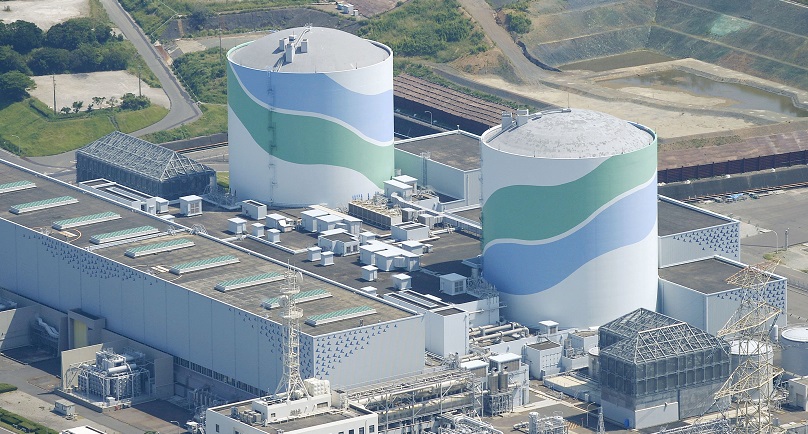Image: An aerial view shows the No.1 (L) and No.2 reactor buildings at Kyushu Electric Power’s Sendai nuclear power station in Satsumasendai, Kagoshima prefecture, Japan, August 11, 2015, in this photo taken by Kyodo. REUTERS/Kyodo
TOKYO (Reuters) – Japanese utility Kyushu Electric Power said on Monday that it was monitoring activity at a volcano near its Sendai nuclear plant, but did not need to take any special precautions after authorities warned of the risk of a larger-than-usual eruption.
The reactor is the first to be restarted under new safety standards put in place since the meltdowns at Fukushima in 2011.
Prime Minister Shinzo Abe and much of Japanese industry want reactors to be switched on again to cut fuel bills, but opinion polls show a majority of the public oppose the move after the nuclear crisis triggered by an earthquake and tsunami.
The possibility of a significant eruption of Sakurajima, located about 50 km (30 miles) from Sendai, is a reminder of the volatile geology of Japan, which has 110 active volcanoes.
“We are not currently taking any particular response,” Kyushu Electric spokesman Tomomitsu Sakata said by phone.
“There is no impact in particular to the operations” of the Sendai plant, Sakata said. “We will continue to pay close attention to information from the Japan Meteorological Agency.”
The 890-megawatt-reactor had reached 50 percent of its output by Sunday and the operator expects full power to be achieved around Aug. 24, Sakata said.
Critics of the nuclear industry say that new safety measures are insufficient, particularly for plants such as Sendai, which is located near five giant calderas, crater-like depressions formed by past eruptions, with the closest one about 40 km away.
The precautions by Japan’s Nuclear Regulation Authority for volcanic eruptions were “wanting in a number of important respects” and did not meet international standards, said John Large, chief executive of Large & Associates, a nuclear engineering consultancy.
Large wrote a report this year on the Sendai plant’s ability to withstand being hit by volcanic ash and has testified in court about the issue.
Sakurajima is one of Japan’s most active volcanoes and erupts almost constantly. There was a risk of larger than usual eruption, an official at the Japan Meteorological Agency said on Saturday.
“With Kyushu’s volcanoes clearly more active, Sendai should be shut immediately,” said Aileen Mioko Smith, executive director at activist group, Green Action, claiming there was no viable evacuation plan for the plant.
The Meteorological agency raised the warning level on the peak, about 1,000 km southwest of Tokyo, to an unprecedented 4, for prepare to evacuate, from 3.
Seventy seven residents who live within a 3 km radius of the craters have been evacuated, an official said on Monday.
(Reporting by Osamu Tsukimori, Kiyoshi Takenaka and Aaron Sheldrick; Editing by Ed Davies)
Copyright 2015 Thomson Reuters. Click for Restrictions.


